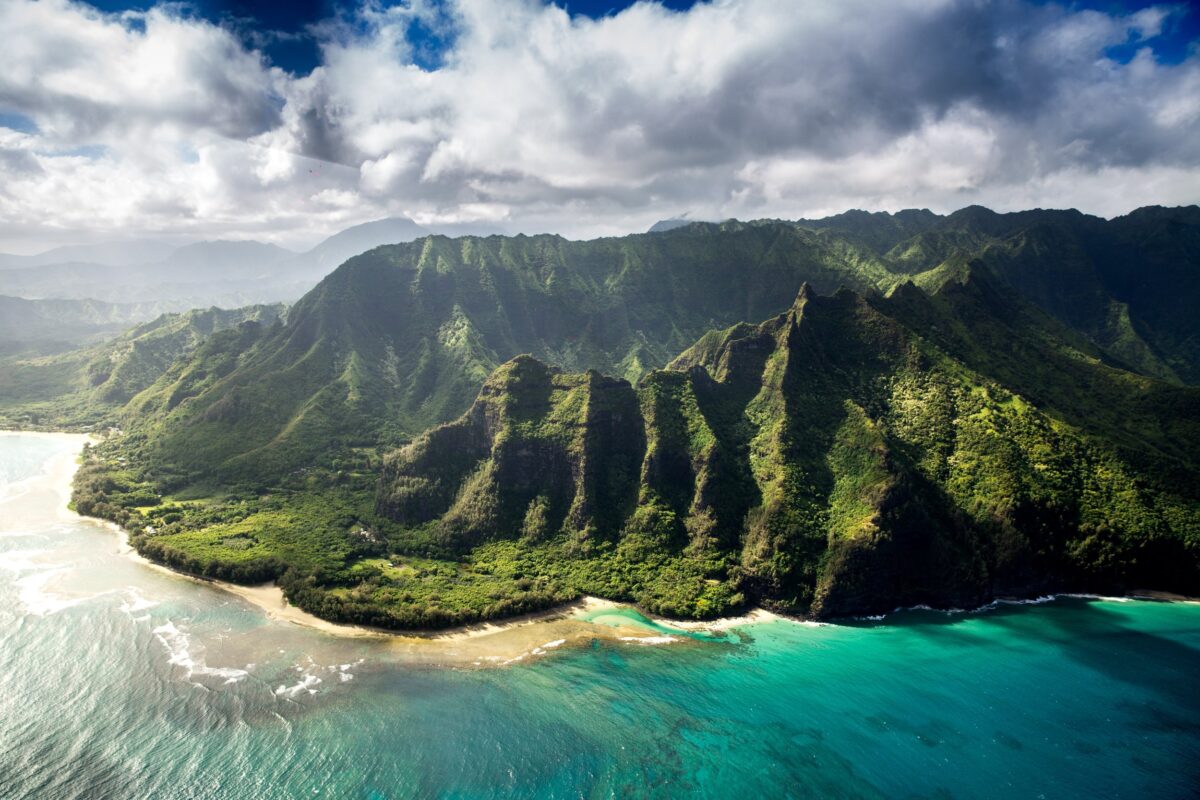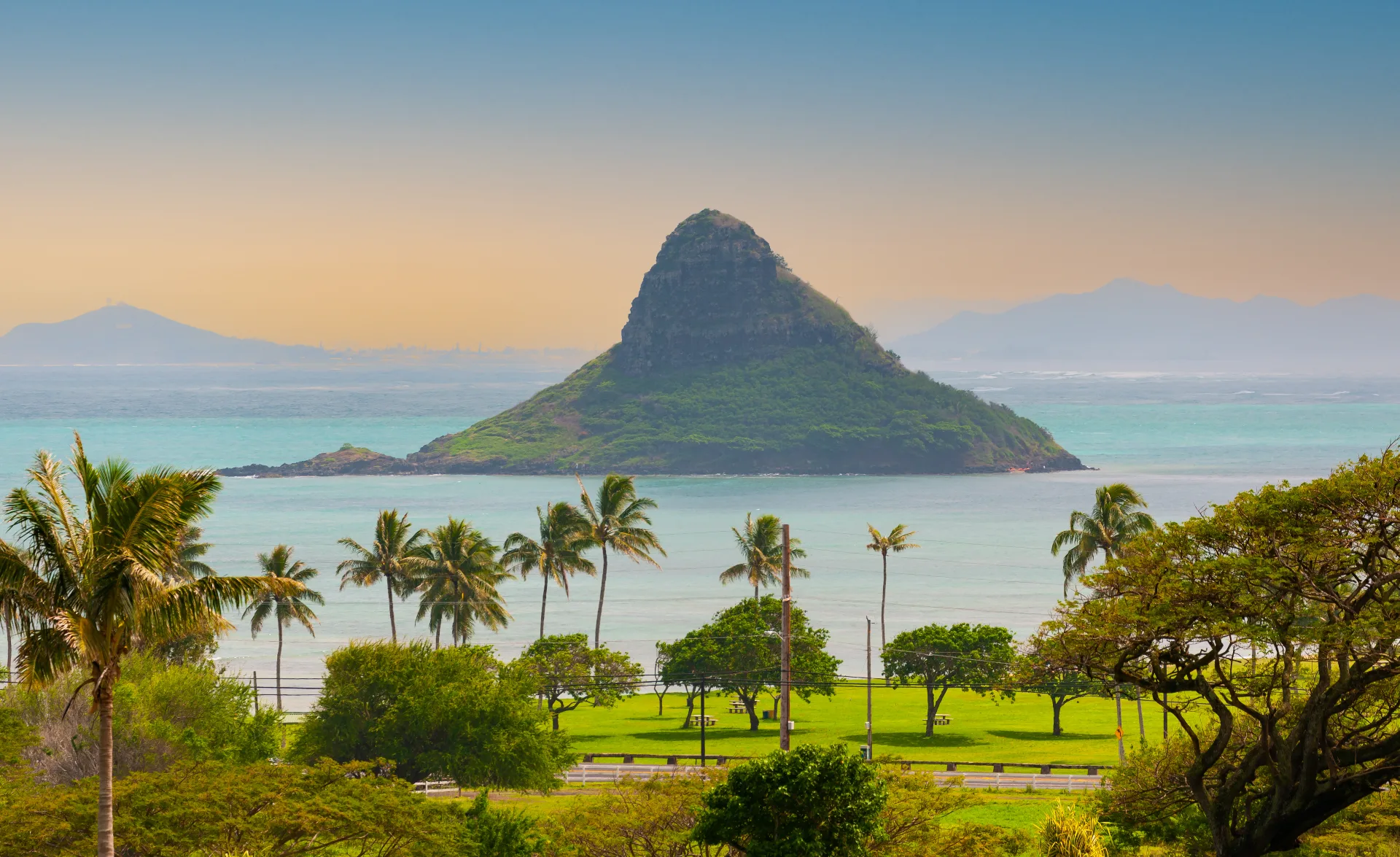Hawaii is one of the biggest tourist destinations in the world. But that doesn’t stop people from wondering about it’s geographical placement. What continent is Hawaii in?
Let’s find out.
Why The Question Arises
The question of whether Hawaii belongs to a continent isn’t as straightforward as it seems! Hawaii’s geography and cultural identity create a unique blend that often puzzles people. It is right in the middle of the Pacific Ocean, around 2,400 miles from the U.S. west coast.
This sense of separation is further enhanced by the rich Polynesian culture in the Hawaiian islands, which sets them apart from the rest of the U.S.

The islands share solid cultural ties with other Pacific island groups within Oceania, which include Polynesia, Micronesia, and Melanesia. Visitors often feel that Hawaii’s language, traditions, and lifestyle differ markedly from the mainland, giving it an almost international feel.
One other factor fuels this confusion, and that is Hawaii’s status as a U.S. state. Although politically part of North America, Hawaii’s unique blend of influences from Oceania and the U.S., along with its remote location, leads people to wonder if it belongs to any continent at all.
Geographical Location of Hawaii
Hawaii has a pretty distinctive location. It is positioned in the central pacific ocean and sits 2400 miles southwest of California, making it one of the most isolated island chains on the planet. Hawaii isn’t on the North American continent and doesn’t sit on a continental shelf.
The Hawaiian islands formed millions of years ago from volcanic activity. A stationary hotspot in the Earth’s mantle created Hawaii by pushing magma up to the ocean floor where it cooled and solidified and built the islands we see today. This hotspot is still active, so the Big Island of Hawaii continues to grow.
Because of its volcanic origins and its distance from any continental plate, Hawaii is technically an “oceanic island chain” not connected to North America, Asia, or any other continent.
This isolation is a big part of Hawaii’s identity and creates a unique environment that is unlike any continental landmass.
Is Hawaii Part of North America?

When it comes to politics and governance, Hawaii is indeed part of North America. So yes, it is an official U.S. state. Hawaii became the 50th U.S. state in 1959, but its ties to the U.S. go back further. In 1898, the islands were annexed by the U.S. for strategic and economic reasons, especially since Hawaii was a military and trade hub.
By the time Hawaii became a state, it was already part of the American political system.
Despite being an island chain in the Pacific, statehood means Hawaii follows federal laws, has representation in Congress, and has residents who are U.S. citizens. The native Hawaiian people vote in presidential elections, and the islands operate under the same federal and state laws as the mainland.
So, while it’s thousands of miles from California, Hawaii is very much part of the North American political landscape, linked to the continent not by geography but by governance and national identity.
Oceania: Hawaii’s Cultural and Regional Connections
Hawaii’s geography and culture align very closely with Oceania. Oceania is a massive region in the Pacific Ocean that includes Polynesia, Micronesia, and Melanesia. Hence, Hawaii is considered a part of Oceania, considering how much it shares with these Pacific cultures compared to mainland North America.
The Hawaiian archipelago has deep cultural and linguistic ties to other islands in the Pacific, such as Samoa, Tonga, and Tahiti.
The Hawaiian language is also part of the Austronesian language family. It is closely related to other Polynesian languages, reflecting shared ancestry and traditions that have spread across the Pacific for thousands of years. This is obvious in everything from Hawaiian hula and dance to language, mythology, and art forms that are the same across the Oceania region.
Hawaii is part of the U.S., but its culture and geography make it more Oceania. This gives Hawaii a Pacific Islander heritage unlike anywhere else in the continental U.S.
Why Hawaii is Not Its Own Continent
Continents are continuous landmasses with varied ecosystems, countless species, and usually multiple countries. Hawaii doesn’t really fit this mold. The chain of volcanic islands are formed by a ‘hotspot of volcanic activity’ in the vast Pacific ocean.
Unlike other continents, Hawaii doesn’t sit on a continental plate, but on the oceanic crust, so it’s not part of any continental landmass or shelf. While continents have sprawling biodiversity and ecosystems across huge areas of land, Hawaii, on the other hand, is small and isolated. It’s got unique species but not the scale or ecological diversity of a continent. Hawaii’s geography makes it special, but that’s why it’s not a continent in its own right.
Instead, it’s part of the Pacific and celebrated for its volcanic history and cultural heritage, but it is not continental by definition.
Conclusion: Hawaii’s Unique Status
In many ways, Hawaii is in its own category. It’s technically part of the United States and politically connected to North America, but far from the mainland, geographically speaking. It sits in the middle of the Pacific ocean, closer to Polynesia than other parts of the U.S. and these Polynesian roots are evident in Hawaiian culture.
This unique blend of American and Polynesian influences gives Hawaii a special identity that isn’t tied to any single continent. The combination of cultural depth and accessibility makes Hawaii a bridge, connecting politically to North America but culturally to Oceania.
This unique blend makes Hawaii a unique cultural destination, drawing in tourists with both its sense of familiarity and far-off mystery.
Ready to experience Hawaii’s unique magic for yourself? Ohana Hawaii Tours offers a range of adventure tours that will immerse you in the stunning natural beauty and rich culture of these islands!
FAQs
1. Is Hawaii a continent?
No. Technically not. Hawaii doesn’t belong to any continent! It’s an island chain in the middle of the Pacific Ocean, making it the only state in the U.S. that’s not part of a continent. While it’s politically part of North America, Hawaii is geographically part of the Oceania region.
2. If Hawaii isn’t a continent, is it part of North America?
Politically, yes. Hawaii is a U.S. state and operates under U.S. law with U.S. representation in Congress. But geographically, no. Hawaii is thousands of miles from the mainland United States, so it’s not part of the North American continent itself.
3. Why do people associate Hawaii with Oceania?
Hawaii has strong cultural ties to Oceania, especially Polynesia. The Hawaiian language, traditions, and history are closely tied to other Pacific island cultures like Samoa, Tahiti, and Tonga. Hawaii is grouped with Oceania because of these shared cultural roots.
4. Why isn’t Hawaii its own continent?
Continents are large, continuous landmasses with diverse ecosystems and species. Hawaii is a smaller island chain formed by volcanic activity, so it doesn’t meet the criteria for a continent. Instead, it’s recognized as an oceanic island chain with a unique cultural and ecological profile.
5. What’s so special about Hawaii’s geography?
Hawaii’s location in the middle of the Pacific Ocean and volcanic formation make it one of the most remote places on Earth. This remoteness is what gives it unique plants, animals, and a rich history, which visitors can experience through Hawaiian traditions and landscapes.
